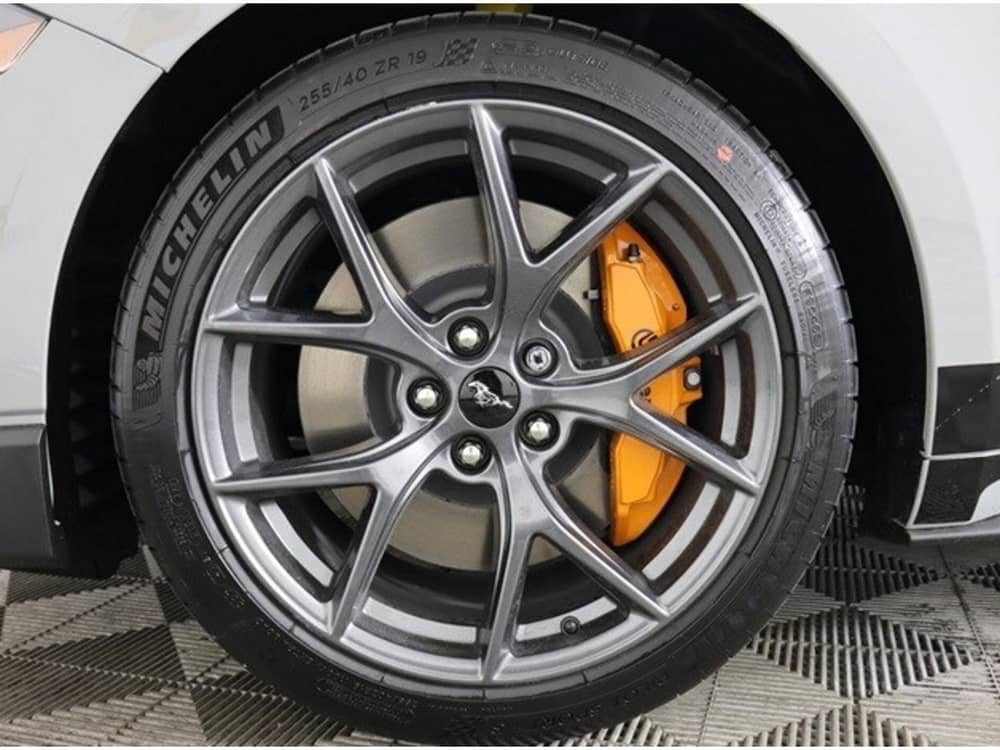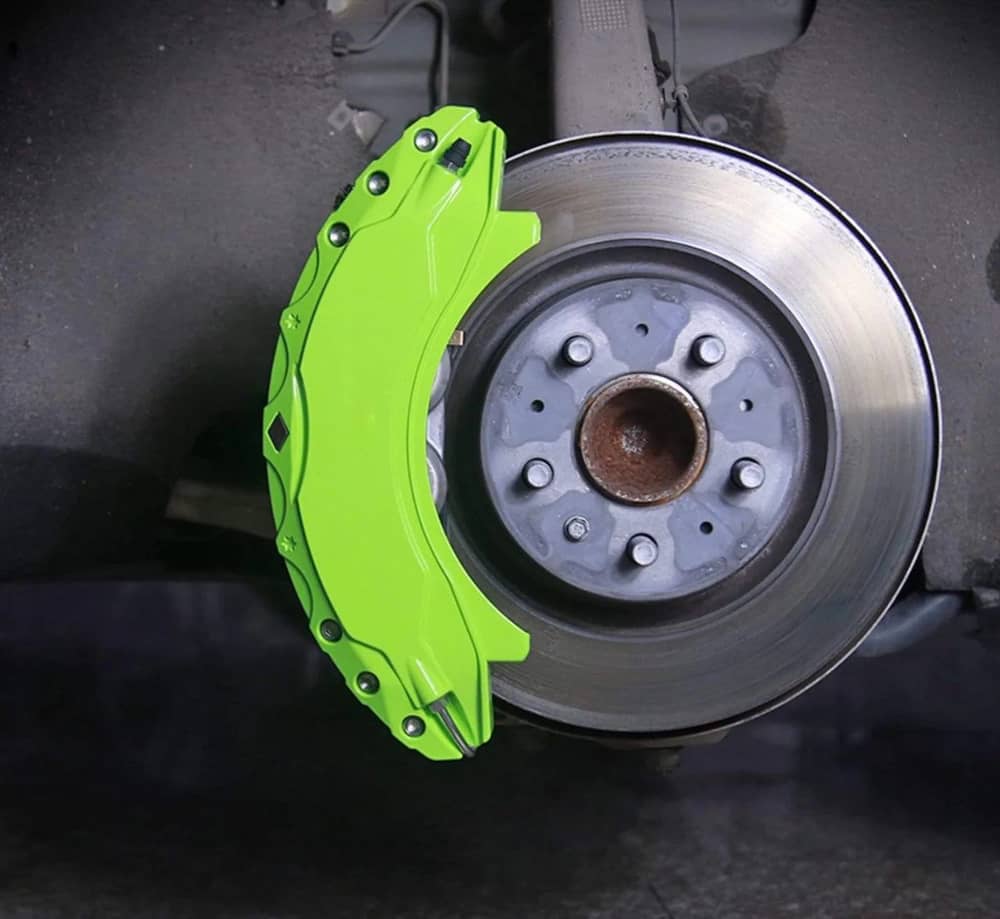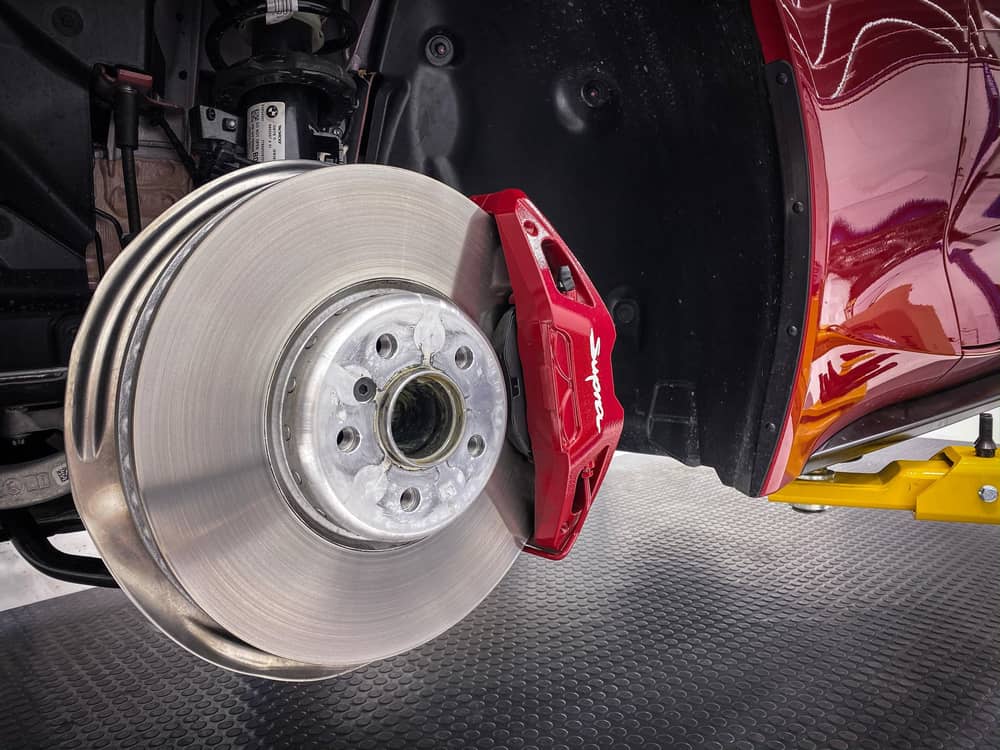The braking system of a vehicle is critical to road safety. Any abnormality within it can have terrible consequences. So, can air in brake lines cause caliper to stick?
The hydraulic system that powers brakes uses fluid pressure to activate the calipers through the brake lines. After that, it applies pressure to the brake rotors to slow or stop the car. When air enters this closed hydraulic system, it can interfere with the fluid’s capacity to reliably convey force. This interruption may cause caliper movement to be uneven. It can cause caliper sticking or uneven braking, putting the vehicle’s stability and control at risk.
In this article, we’ll look at how air in brake lines might impair caliper functioning. We’ll explore the warning signals, potential causes, and steps to identify and fix the problem.
Can Air In Brake Lines Cause Caliper To Stick?

Yes, air in brake lines can potentially cause caliper sticking. Unlike brake fluid, which is incompressible, air can compress as it enters the braking lines. Due to air’s ability to be compressed, the brake system may have an unequal pressure distribution. Caliper sticking is one of the problems it creates.
The failure of one or more calipers to properly release once the brakes are applied causes caliper sticking. As a result, there is uneven brake pad wear, less effective braking, and more heat production. Air in the brake lines can obstruct the hydraulic fluid’s flow and prevent the calipers from fully retracting, which can result in caliper sticking.
You must keep the brake system free of air bubbles and the brake fluid at the recommended level to maintain safe and effective braking. You can prevent caliper sticking by rapidly addressing any problems with air in the brake lines. Additionally, it aids in preserving the overall effectiveness of the braking system.
Why Air In Brake Lines Cause Calipers To Stick?

Air in brake lines cause calipers to stick because of uneven pressure distribution, brake fluid contamination, and caliper piston sealing. Let’s get into more detail about them below:
Uneven Pressure Distribution
Air bubbles in the brake lines can prevent the hydraulic pressure from being distributed evenly. Air can compress when you use the brakes, unlike brake fluid, which can result in changes in the pressure that is applied to the calipers. Uneven braking force might result from calipers that are under pressure differently than others. Less-pressured calipers are more prone to stick and not release correctly after braking.
Caliper Piston Sealing
To press and release the brake pads against the rotor, calipers contain pistons that extend and retract. The proper operation of the caliper piston seals can be hampered by air in the braking lines. The piston might not retract all the way if these seals are damaged because of air infiltration. Due to the brake pads’ continued partial contact with the rotor, caliper sticking results.
Brake Fluid Contamination
Air in the brake lines can introduce impurities like moisture, dirt, or debris into the brake fluid. These impurities can cause corrosion and damage to the seals and other internal caliper components. The sticking problem could be made worse by damaged seals that can’t efficiently release the brake pads.
Consequences Of Air In Brake Lines Cause Caliper To Stick
After check the reasons of this problem, now we move to find the consequences:
Increased Heat Buildup
During braking, caliper sticking may produce an excessive amount of heat. Air in the brake lines can cause the caliper to not fully release, which can result in persistent friction and heat between the brake pads and rotor. The caliper seals and other components may become less reliable as a result of this heat, which will make the sticking issue worse.
Brake Pad and Rotor Wear
As a result of caliper sticking, brake pads and rotors frequently wear unevenly. Uneven pressure on the brake pads results in uneven wear when one or more calipers fail to release properly. This uneven wear worsens the sticking problem over time and may necessitate expensive brake component repairs or replacements.
Reduced Braking Performance
Sticking calipers significantly reduces braking performance. Caliper sticking can greatly impair a driver’s ability to stop the vehicle swiftly and safely in an emergency. This is a major safety concern on the road.
How does fixing air in brake lines cause the caliper to stick?

You can follow our guide below to fix this problem:
Prepare Tools and Materials
- A jack
- A lug wrench
- Brake fluid
- Clear plastic tubing or a brake bleeder kit
- A brake bleeder wrench or a box-end wrench
- A brake fluid catch bottle
Identify the Problem
To effectively fix the problem, you must first identify the exact caliper that is sticking. Any unexpected indicators, such as unusual noises, vibrations, or uneven braking, should be taken seriously. Remember that it could be one or more individual calipers that are causing the issue, rather than all four.
Locate the Brake Bleeder Valve
Each caliper on your vehicle has a bleeder valve. These valves are often located on the caliper’s rear, closer to the brake line connection. It is critical to identify the bleeder valve on the caliper that is stuck.
Prepare for Brake Bleeding
You’ll need help bleed the brakes properly. Place your spouse in the driver’s seat, ready to follow your orders during the bleeding process. Place a catch bottle or container beneath the bleeder valve to collect the discharged brake fluid.
Bleed the Brake Line
Begin with the stuck caliper (although bleeding all calipers for a comprehensive braking system flush is an alternative). Gently release the bleeder valve with your wrench. Instruct your assistant to depress the brake pedal gently and firmly.
As your assistance maintains pedal pressure, slightly open the bleeder valve. This will drive brake fluid and any trapped air out through the valve and into the catch container. Keep an eye on the fluid level in the master cylinder reservoir to ensure it does not run empty, and add additional brake fluid as needed.
When the brake fluid is clear and free of air bubbles and your assistant releases the brake pedal, safely close the bleeder valve. If necessary, repeat the process for the same caliper until all air has been purged.
Move to Other Calipers
Repeat the bleeding procedure for each caliper if you suspect or have previously experienced sticking. Typically, you should begin with the caliper farthest away from the master cylinder and work your way closer. The usual sequence is as follows: rear passenger, rear driver, front passenger, front driver.
Check and Topping Off Brake Fluid
Examine the brake fluid level in the master cylinder reservoir after bleeding all concerned calipers. To guarantee appropriate brake action, top it off to the prescribed level with fresh brake fluid.
Test Drive and Monitorate
After completing the brake bleeding procedure, carefully test drive your vehicle. Apply the brakes lightly numerous times to ensure smooth and consistent operation. Check the brake pads for even wear and listen for any strange noises. If it happens again, get an expert inspection and repair.
Brakes that work properly are critical to your safety and the safety of others on the road. It is critical to do regular brake maintenance, including bleeding the brake lines to remove air. It contributes to the overall safety and dependability of your vehicle’s braking system.
Final Thoughts
In conclusion, air in brake lines can cause caliper sticking, resulting in uneven braking and significant safety issues. Prompt brake line bleeding is critical for removing air and ensuring even hydraulic pressure distribution among calipers. For a safe and dependable braking system, regular brake maintenance is required.
